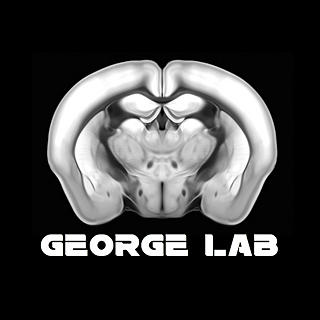Identification of a neuronal pathway responsible for excessive drinking and alcohol dependence
- Olivier George
- Mar 25, 2019
- 3 min read

This new paper identify a key brain network responsible for alcohol dependence and demonstrates that it is possible to reverse the desire to drink in alcohol-dependent rats by targeting this specific group of neurons using lasers.
In a new study published online in Nature Communications on March 18, 2019, Dr. de Guglielmo used behavioral models, molecular biology, electrophysiology and optogenetics to unveil the role of a corticotropin releasing factor (CRF) neuronal ensemble in the central nucleus of amygdala (CeA) that is responsible for excessive alcohol drinking. Optogenetic inactivation of the CeA-CRF neurons was able to reverse alcohol-seeking behavior and reduce the physical symptoms of withdrawal. “This discovery is exciting—it means we have another piece of the puzzle to explain the neural mechanism driving alcohol consumption,” says Olivier George, PhD, associate professor at Scripps Research.
This study is the follow up of a previous publication from 2016 (link) where the researchers in the George lab identified a neuronal ensemble in the CeA that drives alcohol drinking in dependent subject. In this new manuscript the researchers characterized the identity of these neurons. It was found that the ensemble was mainly composed by CRF neurons.
The researchers studied these neurons using optogenetics, a technique that involves the use of light to control cells in living tissue. Rats used in this study were surgically implanted with optic fibers aimed to shine light on the CRF neurons to inactivate them at the flip of a switch. The scientist used a sophisticated animal model to induce alcohol dependence in which the rats consume high amount of alcohol every day and go through severe symptoms of withdrawal. Inactivation of the CeA CRF neurons completely reversed the compulsive alcohol drinking and the physical signs of withdrawal.
In this multidisciplinary study, we were able to characterize, target and manipulate a critical subset of neurons responsible for excessive drinking. This was a team effort, and while we used challenging techniques, working with experts in the field and with the right tools, made everything easier and enjoyable” says Giordano de Guglielmo, PhD, first author of the study.
The combination of optogenetical and electrophysiological techniques was important to dissect the role of the different projections of the CeA CRF neurons. In fact, the authors tested the effect of the inactivation of four different CeA pathways and found that the only terminal region that was able to recapitulate the behavioral effects seen in the CeA was the Bed nucleus of the stria terminalis (BNST).
The next step in translating this work to humans is to find a way to selectively inhibit only these specific CRF neurons, perhaps using novel or repurposed compound identified using high-throughput screening of large libraries of compounds.
Additional authors of the study, “Inactivation of a CRF-dependent amygdalofugal pathway reverses addiction-like behaviors in alcohol-dependent rats,” were Marsida Kallupi, Elena Crawford, Sierra Simpson and Paul Schweitzer of Scripps Research; Matthew B. Pomrenze and Robert O. Messing of The University of Texas at Austin; and George F. Koob of the National Institute on Drug Abuse, National Institutes of Health.
The study was supported by the National Institutes of Health (grants AA006420, AA020608, AA022977, AA13588 and AA026075).
Inactivation of a CRF-dependent amygdalofugal pathway reverses addiction-like behaviors in alcohol-dependent rats. Giordano de Guglielmo, Marsida Kallupi, Matthew B. Pomrenze, Elena Crawford, Sierra Simpson, Paul Schweitzer, George F. Koob, Robert O. Messing & Olivier George. Nat Commun. 2019 Mar 18;10(1):1238. doi: 10.1038/s41467-019-09183-0.
https://www.altmetric.com/details/57232846?src=bookmarklet






Comments